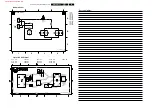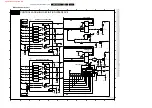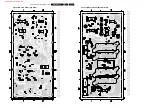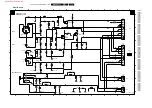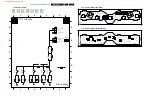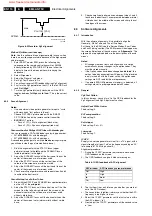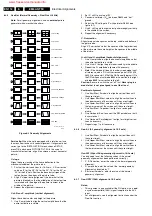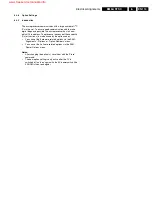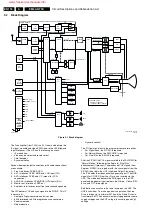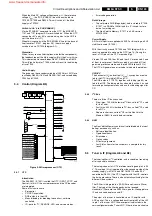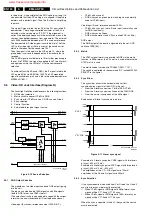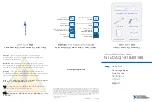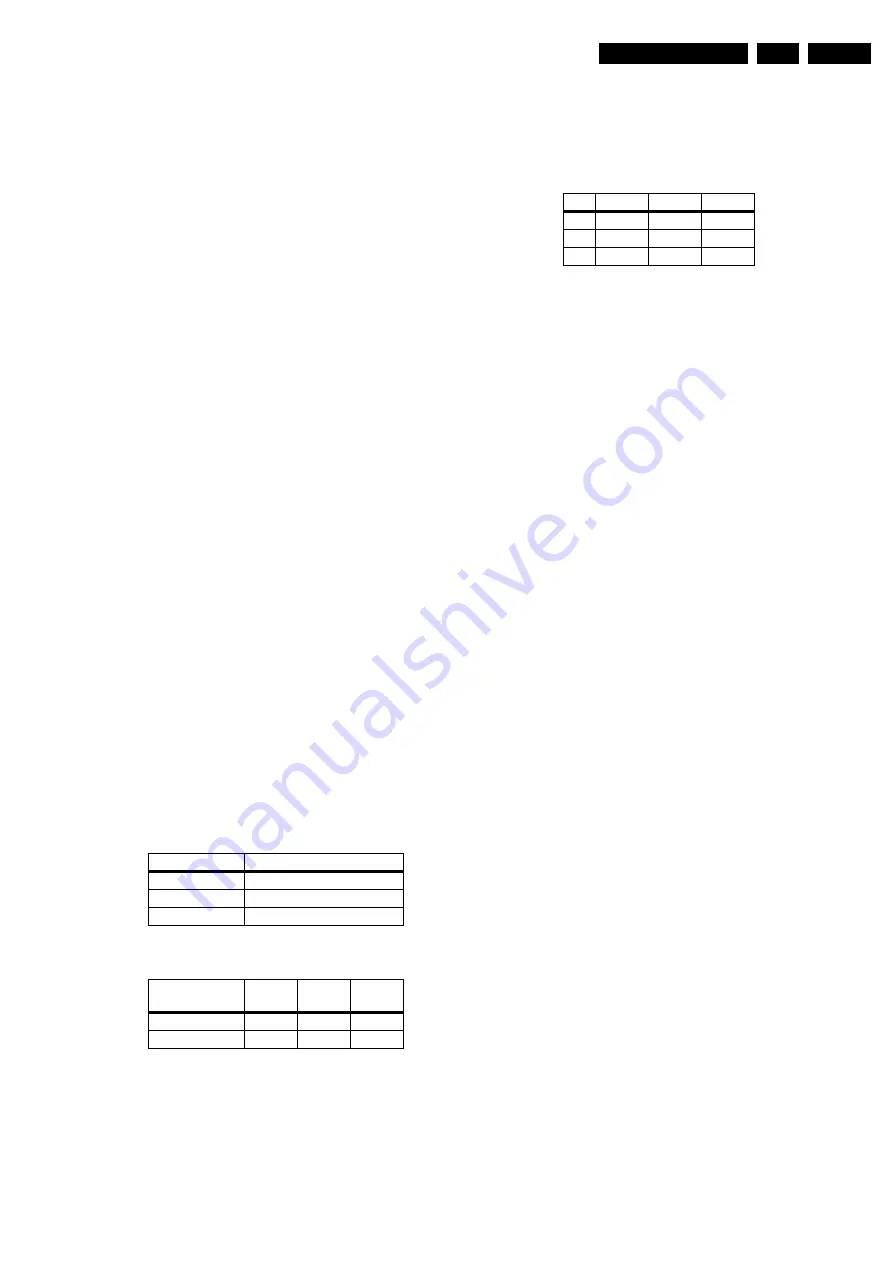
Electrical Alignments
8.
7.
After adjustment, ‘Store’ the value.
Tuner AGC
1.
Connect the RF output of a video pattern generator to the
antenna input.
2.
From the generator, input an NTSC TV signal with a signal
strength of approximately 2 mV and a frequency of 61.25
MHz (Channel 3.)
3.
Measure the DC voltage on pin 1 of the main tuner. You
can adjust this voltage by adjusting the 'Tuner AGC' item in
the SAM menu.
4.
Alignment is correct when the DC voltage is just below
3.8 V.
Tuner AGC Tuner 2
Use the same procedure as described above (under 'Tuner
AGC') with the set switched to the DW source.
Measure on pin 1 of the DW tuner.
Blend intensity
Use this alignment when you replace the microcontroller or the
HOP. It aligns the level of transparency of the menu-picture
blended into the main-picture.
Position the BRIGHTNESS, CONTRAST, and COLOR setting
in the middle position (in the customer 'Picture' menu.)
1.
Apply a signal with a 100 % white video pattern (white
raster.)
2.
Connect an oscilloscope to pin 8 of connector 1298 of the
CRT panel and measure the Red output level.
3.
Align the 'Blend intensity' parameter so that the blended
signal is 65 % of the black-white amplitude. This will be
about 1.3 V (blended signal) versus 2 V (full white signal.)
4.
The parameter can be adjusted from 0 to 31.
8.3.3
Drive
Method 1 (with color analyzer):
1.
Select 'Test pattern' and turn it 'On.' During the following
alignments, you will see a white block in the middle of the
screen.
2.
Select 'Cathode' and adjust the set to the correct light
output. This setting depends on the picture tube size and
brand. See “Cathode parameter” table for the color
analyzer readings.
3.
Select a 'Color Temperature' ('Cool,' 'Normal' or 'Warm'.)
4.
Adjust the white level (via 'Red,' 'Green,' and 'Blue')
according to the values in table 'White levels'.
Table 8-2 Cathode parameter
Table 8-3 White levels
Method 2 (without color analyzer):
If you do not have a color analyzer, you can use the default
values. This is the next best solution. The default values are
average values coming from production (statistics.)
1.
Select 'Cathode' and enter the value '15' (for all picture
tubes.)
2.
Select a 'Color Temperature' ('Cool,' 'Normal' or 'Warm'.)
3.
Set the 'Red,' 'Green' and 'Blue' default values according
to the values in the 'Tint settings' table.
4.
'Red BL offset': the Black Level can be aligned very
precisely here (the default value is 7.)
5.
'Green BL offset': the Black Level can be aligned very
precisely here (the default value is 7.)
Table 8-4 Tint settings
8.3.4
Lum. Del. (Luminance Delay)
With this alignment, you place the luminance information
exactly on the chrominance information (brightness is pushed
onto the color.) Use a color bar/gray scale pattern as test signal
(default value = 11 for all.)
•
Lum. Delay PAL BG: Apply a PAL BG color bar/gray scale
pattern as a test signal. Adjust this parameter until the
transients of the color part and black and white part of the
test pattern are at the same position.
•
Lum. Delay PAL I: Apply a PAL I color bar/gray scale
pattern as a test signal. Adjust this parameter until the
transients of the color part and black and white part of the
test pattern are at the same position.
•
Lum. Delay Secam: Apply a SECAM color bar/gray scale
pattern as a test signal. Adjust this parameter until the
transients of the color part and black and white part of the
test pattern are at the same position.
•
Lum. Delay Bypass: apply a NTSC color bar/grayscale
pattern as a test signal. Adjust this value until the transients
of the color and black & white part of the test area are at the
same position.
CRT
Light output (cd/m
2
)
29" RF 4:3
400
34" RF 4:3
350
36" RF WS
330
ColorTemp. (K) Cool
(18300)
Normal
(13500)
Warm
(8700)
X
256
266
289
Y
264
274
299
∆
Cool
Normal
∆
Warm
R
- 4
37
+ 5
G
0
30
0
B
+ 4
31
- 9
www.freeservicemanuals.info
Summary of Contents for EM5A NTSC
Page 6: ...Direction for Use EN 6 EM5A NTSC 3 3 Direction for Use www freeservicemanuals info ...
Page 7: ...Direction for Use EN 7 EM5A NTSC 3 www freeservicemanuals info ...
Page 8: ...Direction for Use EN 8 EM5A NTSC 3 www freeservicemanuals info ...
Page 9: ...Direction for Use EN 9 EM5A NTSC 3 www freeservicemanuals info ...
Page 10: ...Direction for Use EN 10 EM5A NTSC 3 www freeservicemanuals info ...
Page 11: ...Direction for Use EN 11 EM5A NTSC 3 www freeservicemanuals info ...
Page 12: ...Direction for Use EN 12 EM5A NTSC 3 www freeservicemanuals info ...
Page 13: ...Direction for Use EN 13 EM5A NTSC 3 www freeservicemanuals info ...
Page 14: ...Direction for Use EN 14 EM5A NTSC 3 www freeservicemanuals info ...
Page 15: ...Direction for Use EN 15 EM5A NTSC 3 www freeservicemanuals info ...
Page 16: ...Direction for Use EN 16 EM5A NTSC 3 www freeservicemanuals info ...

